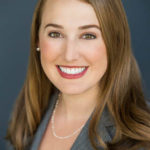
Dr. Helmus (right) with her former associate, Sally Talaga, OD. Dr. Helmus says that brainstorming with and receiving support from other optometrists can be a great way to improve your practice and recharge your energies.
By Julie Helmus, OD
Feb. 15, 2023
Credit to Mick Kling, OD, for this analogy that I can’t shake: “Being a business owner is like having a tire with a hole” – you can inflate it, and for time it will hold air, but it slowly deflates and you must keep pumping.
While a burst of force can lead to results, the highs are temporary, and the lows are inevitable. Seven years in as an owner of a $3.5 million- grossing “super single” location, my mood remains tied to the sine wave of the practice’s dynamism.
So when a fellow practice owner recently lost his mojo, I recognized the headspace. “One plot twist too many” in his private practice saga. “We’re trapped. I just want to get out as fast as possible and spend my time fishing.” We’ve been in the same private practice consulting group since the dawn of COVID and have shared metrics and meals. It wasn’t long ago he was building me up. During my last low, I peered down the rabbit hole of selling to PE.
But this time, I’m feeling high on ownership after an inspiring trip to Vegas for Vision Expo West. I text him a screenshot of a possible flight itinerary with the caption: “Yes or no? Rough patches require friends.”
Not all owner ODs can hop on a flight and take off for three days. This week it works out, thanks to a supportive spouse, reliable childcare, relative practice stability and associates!
“Are you going to feature me on a reality show called ‘Practice Nightmares?’” he asks, downtrodden, but with his sense of humor intact. That first night, we make plans to hit something: driving range or ping-pong. On the table, as in the C-suite, he’s my equal.
Overcoming Professional Isolation
Among the ranks of business owners, professional isolation is real. Reaching out for camaraderie, maintaining relationships across state lines and amidst an overbooked schedule, takes energy. But we need each other. Spouses don’t get it. Staff are not a substitute for friends. And the interaction with patients is usually a one-way flow of energy.
I draft an intro paragraph for him to distribute to his staff in advance, and show up to clinic with bagels and his org chart. He’s booked out six weeks (too far), so he’s busy with patients every 20 minutes. He gives me free reign of the office. Trust or desperation?
I hop in the exam room and enjoy his honed scrips. He has 12 years on me in the lane. Another proud Pacific alum! I peak over his scribe’s shoulder and watch his PhraseExpander in action.
Next, I spend an hour with his biller, who, like many billers, is struggling to keep up with the constant gush while confined to her own corner, away from the more social patient-facing staff. I’m happy to hear a second remote biller is being onboarded this same week. Acknowledge and incorporate her, I suggest to my comrade. I leave a hand-written card at her desk; she beams.
Other Articles to Explore
I spend an hour at the front desk, a semi-circle with three young women in navy scrubs. Each with a quick draw on a phone. Why are phones being answered up here, when there is ample space in the back of the clinic? Call center, I suggest. Between checking patients in and out (40-60 a day), the “Patient Services” Team also proactively calls patients who haven’t confirmed their appointment for the following day. “Why are so few confirming via text?” I ask. “We should review the verbiage on the text message reminders,” the front desk lead suggests. She read my mind!
“It’s Not Just Us!”
I observe common daily hiccups. “It’s not just us!” I think. No office is immune. The catch-22 of password management plays out (must be accessible but also secure) when the front desk lead gets locked out of the EHR, and hovers outside the lane for the owner to emerge and push a reset. Later the internet cops out temporarily, so the VOIP phones go quiet. “How often does this happen?” I ask. I pay for two internet providers (one broadband, one DSL, with an automatic fail over). “No down days” is my motto.
While the clinic is on pause, I toss around some questions: “What are you saying to avoid no-shows? What is the cost of a missed appointment? How are you encouraging patients to schedule with the associate instead of the booked-out owner-OD? How are you explaining the ever-confusing out-of-pocket contact lens fitting fee?”
Later, I get two uninterrupted hours with the optical director. She’s an industry veteran, but with only nine months at this office. She’s the full package: experienced, motivated, optimistic and team-centric. She’s already raised frame and lens pricing and navigated a lab switch for better customer service and reduced COGs. But she’s never heard of lens banks or researched buying groups. And she’s struggling to connect with the tenured techs on the other side of the clinic. The doctor-to-optician hand-off (and capture rate) is suffering as a result.
Throughout the two days I ask various members of the team: “what’s the busiest month of the year?” Techs say August. Optical says December. Should they think as one? The owner doesn’t know. Graph it! I demand.
Helping a Fellow OD Generate Ideas for Improvement
Throughout my wanderings around his practice, the staff share their wish lists with me, in the hope I’ll share with their boss (which I do): bring back the cleaners (janitorial was cut by the former office manager to reduce overhead). Have an agenda for staff meetings. Let us help update the practice mission statement and core values. Tell him to join us outside of work for a beer from time to time. Fly us to California to visit your practice!
Day two I wake up with a new clinic floor plan in mind. The current space is too expensive (greater than 7 percent top-line revenue for occupancy) and bigger than they require. Move the optical gallery closer to the exam rooms, so the doctors hand off directly to optical! Sublease the front to an audiologist or the like? My colleague is intrigued, but overloaded. It’s easy to spout suggestions when implementation isn’t my problem. Should we go to the office at 5 a.m. to map it out? Not this time.
A conundrum for many optometry practice owners who rent their office space: do they invest in tenant improvements, or make a play to be their own landlords? His lease is up in two years. The current space needs a major remodel. Real estate is one of the three legs on the stool of wealth, I remind him. But when is there time between patients, staffing and family to make a move? Inertia often wins out.
From his crowded corner office, I call the first three local commercial realtors that pop up on Google. Plenty of land options available, but a new build-out is probably too much for my overworked buddy. How about existing commercial spaces for sale between 3,000-5,000 square feet with low windows, foot traffic and parking? Nothing listed say the first two realtors. The third comes through: there is one unlisted space two minutes away, on the same street, with great visibility. The building for sale has five units, four of which are rented out to reliable tenants. We tour the space before I head to the airport. Know your options. Which path will he take? I know what I’d do, but this is his journey.
On my final afternoon, the mothership pings me: come back to base. One of my associates is stuck out of town due to a canceled flight, and I need to take over her patient schedule tomorrow. My husband will have to handle school drop off yet again. Whatever it takes. Pump, pump, hiss…
 Julie Helmus, OD, is a second-generation optometrist and owner of Helmus Optometry in Davis, Calif. To contact her: dr.julie.helmus@helmusoptometry.com
Julie Helmus, OD, is a second-generation optometrist and owner of Helmus Optometry in Davis, Calif. To contact her: dr.julie.helmus@helmusoptometry.com

























